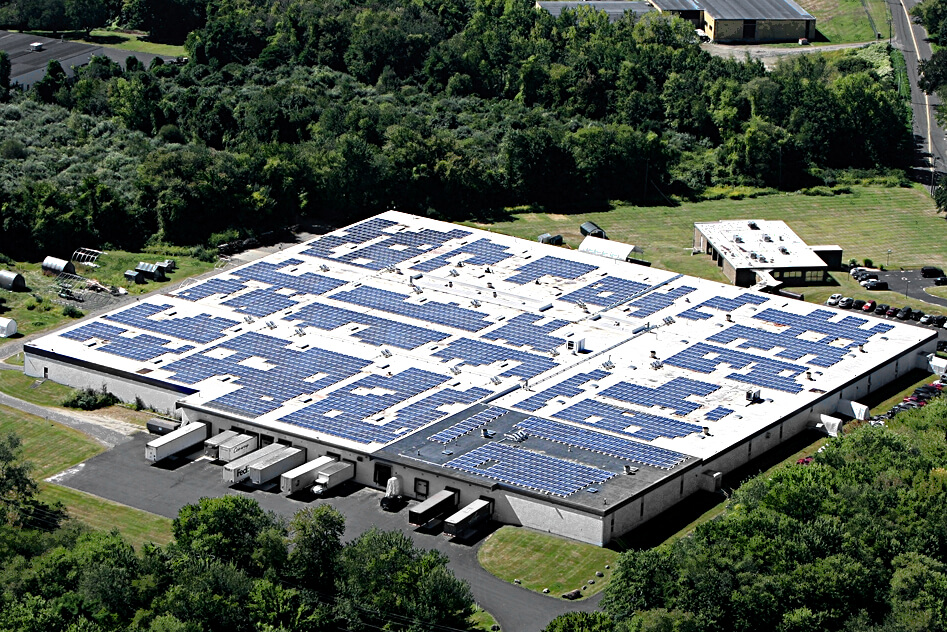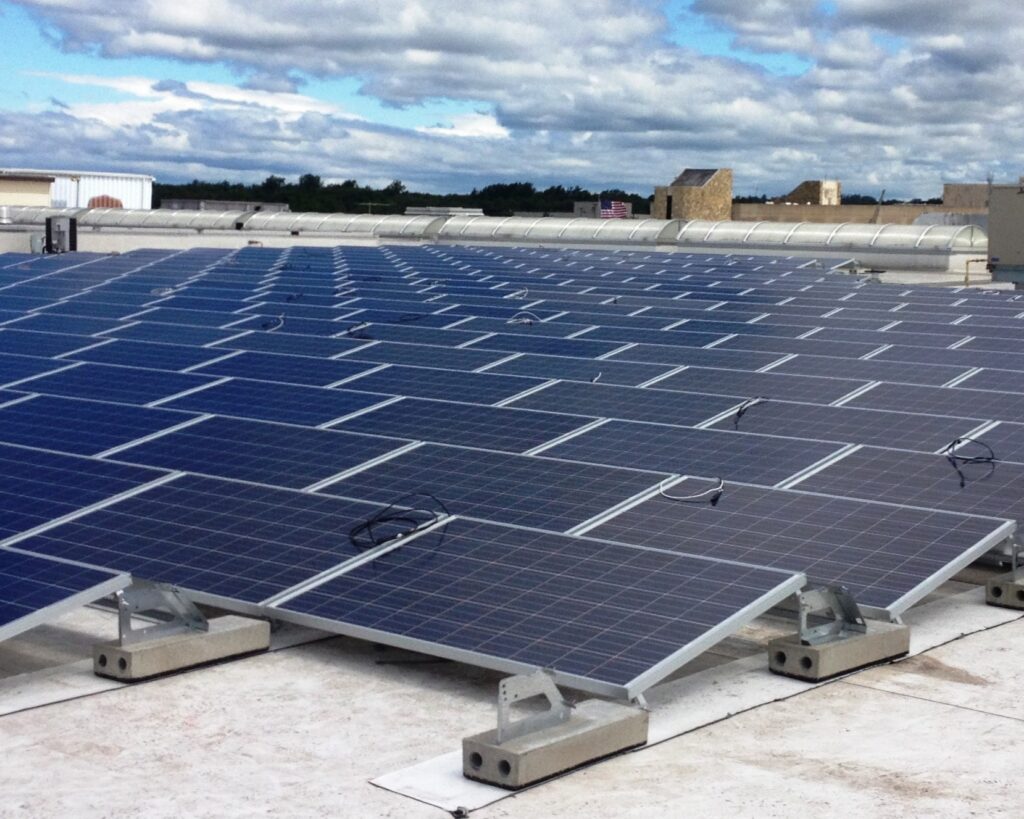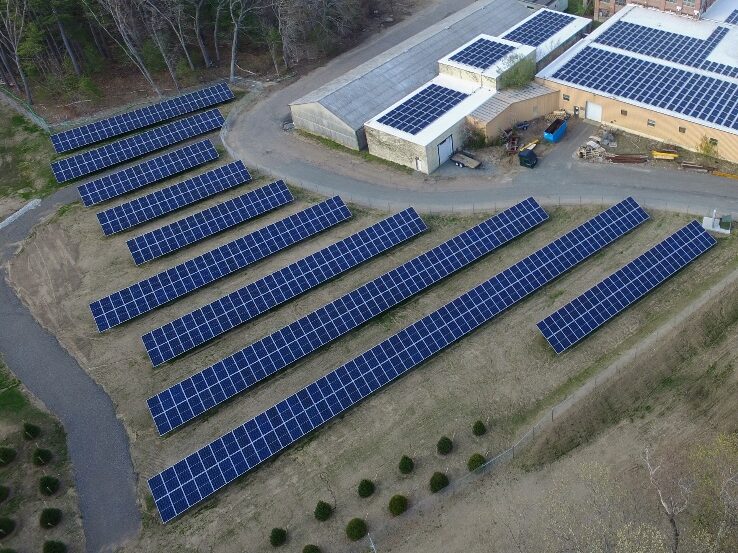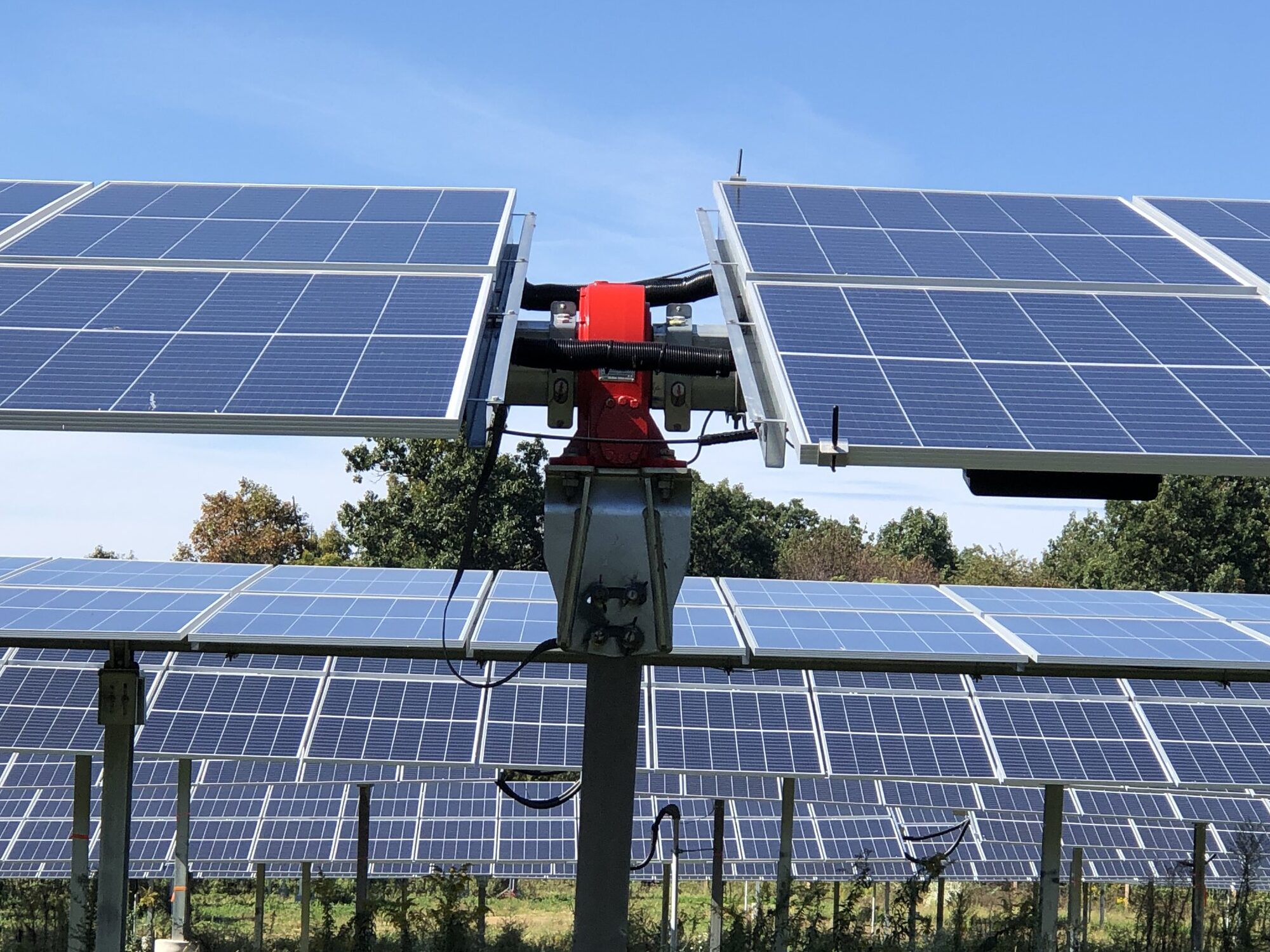Solar Technology Types
Roof, ground, or parking, we’ve got it covered
ROOFTOP SOLAR
Commercial and industrial (C&I) facilities with large, unused roofs are great candidates for solar.
Rooftop solar systems are carefully designed and positioned to maximize exposure to sunlight, without interfering with facility operations that may require access to other rooftop equipment. In addition, rooftop solar photovoltaics absorb harmful UV waves, reducing degradation and increasing the longevity of roofs.

Rooftop Technology
Bifacial panels capture sunlight from both sides, which means that white reflective roof coating can boost energy generation. This can be done for little to no additional cost.
Our non-penetrating solar design uses slipsheets and simple concrete ballasts to protect the roof from damage. This creative approach, while not high-tech, can save costs and provide peace of mind around roof warranties.
BIFACIAL PANELS

NON-PENETRATING DESIGN

Parking SOLAR
Businesses and property owners are using their parking space creatively to achieve their goals.
With solar panels raised above the existing parking areas, installations can generate electricity while providing shade and protection from the elements and UV rays for employee and customer vehicles.
These systems are designed so they do not impact the flow of traffic and parking capacity and can even be added atop existing structures. Solar parking canopies can also incorporate lighting for enhanced safety or electric vehicle charging stations for an additional green component.

Solar Parking Technology
Integrating EV charging with solar in parking lots enhances sustainability, offering convenient, eco-friendly energy solutions for electric vehicles. This innovative pairing offers employees or customers eco-friendly amenities while reducing carbon emissions.
Hanging equipment like inverters and optimizers ensures pedestrian and traffic flow are unimpeded, minimizing the system’s footprint.
EV CHARGING

HANGING EQUIPMENT

GROUNDMOUNT SOLAR
No rooftop, no problem.
Occasionally, C&I roofs are encumbered with vents, skylights, and other features that prevent optimal system design for rooftop solar. Or perhaps there’s additional land available at your property.
In cases like this, we often install ground mounted solar arrays. In some cases, ground-mounted solar arrays may be the only option if the roof of the building or parking lot is not large enough to design the desired system or does not receive enough daily sunlight due to shading from trees or other structures.

Ground Mount Photovoltaics
Ground-mounted solar systems can now incorporate tracking systems that allow solar panels to follow the sun’s path throughout the day, optimizing energy capture.
Single-axis and dual-axis tracking systems adjust the tilt and orientation of the panels to maximize solar exposure, increasing overall energy production.
TRACKERS
